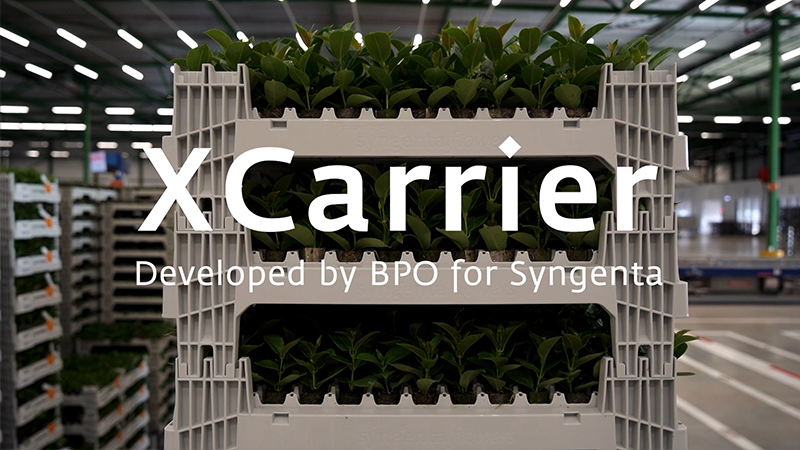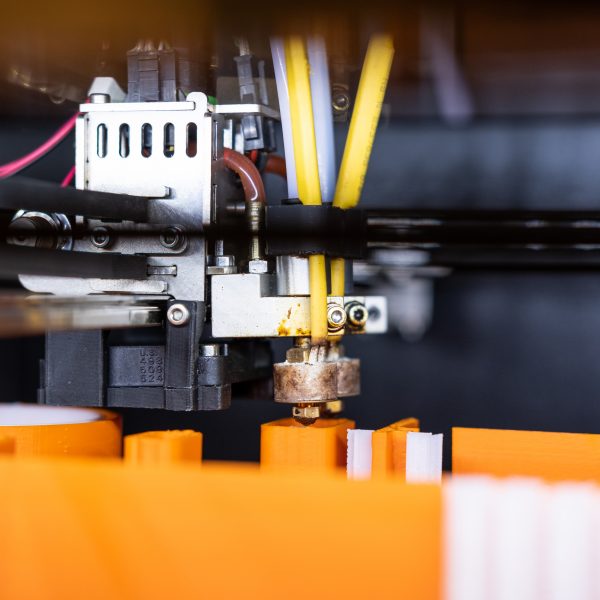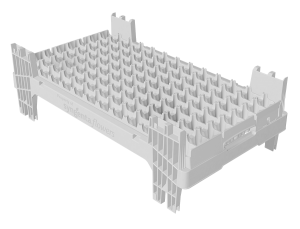
Xcarrier for Syngenta Flowers
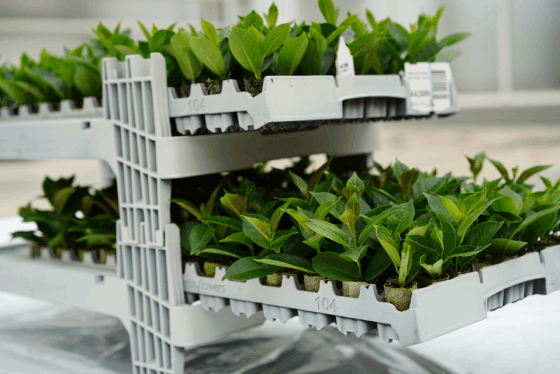
Twenty years ago, BPO assisted Syngenta Flowers with the development of their current reusable plant carrier: The Xtray. This was a big system change. The returnable Xtray replaced the single use polystyrene trays at the time. However, until recently they still used a disposable polystyrene tray for certain purposes.
Syngenta Flowers now wanted to completely get rid of the disposable trays. This would require a totally new system. After years of experience with the product, they had a set of functional and technical requirements for the system they wanted. The new plant carrier should exist of two parts: a tray for the plant production and a separate frame for transport. The tray should be close to the ground, to easily water the growing plants from below. It should also have less spacing in between when placed in a grid and be reusable. During transport the tray will be placed in a frame. This frame should give the plants enough room in height for the plant and its delicate leaves.
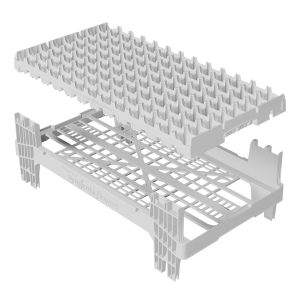
BPO developed the product from the first idea to the Xcarrier. The first part is the tray, which contains 104 pockets and holds the young plants. The tray is designed to be handled easily by one hand and can be placed on the carrier from both short sides. After use, the trays are cleaned up in an automated line and ready for another batch of plants. An empty tray can be efficiently stacked on a pallet for transport. The second part is the carrier. The carrier is compatible in stacking with the current Xtray, but also nests compactly for transport. The carrier holds the trays with plants during transport to keep them safe.
During handling, stacking and transport, the Xcarrier will experience some critical loads. Using FEM-simulations on different concepts, BPO was able to choose the best product geometry to withstand these. Especially the stiffness of the frame is important for a good function of the system. In the Moldflow simulations, special attention has been given to the warpage. After injection molding the parts can deform due to shrinkage of the plastic. A big risk was that the feet of the frame would deform too much and could not be stacked straight anymore. In the moldflow optimization it has been made sure that the parts are straight and stay within the tolerances, so all parts fits and can be stacked nicely.
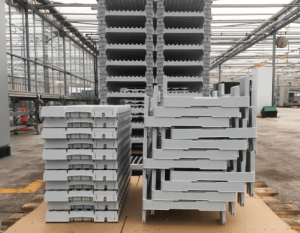
Both the Xcarrier and the Xtrays are made of the same plastic. The estimated lifespan of both parts of the Xcarrier is at least ten years. When a defect occurs, the Xcarrier can be recycled into the same product. The Xcarrier can also be made of old Xtrays. This makes the Xcarrier design a good example of a fully circular product.
Meanwhile the Xcarrier has been introduced successfully and a word wide patent has been granted to this system.
Watch the Xcarrier video below:
Used services

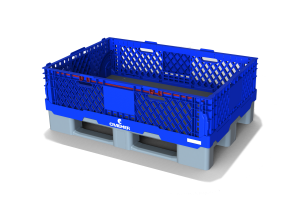
Pallet Collar

